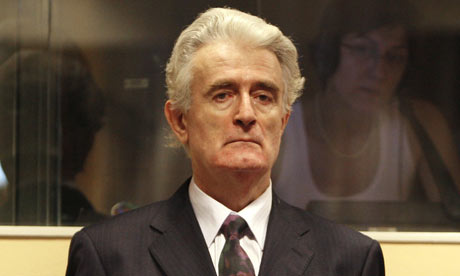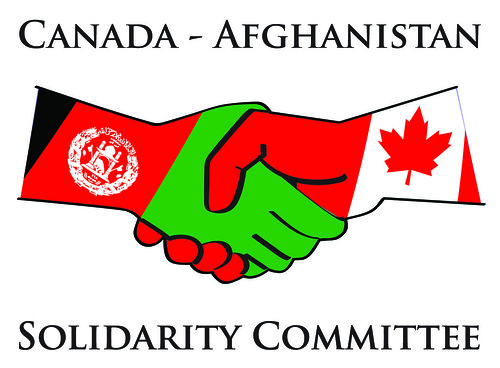"The capacity of the Afghan Government at the national, provincial and district levels remains limited and suffers from corruption. Continuing insecurity, criminality and, in places, the influence of the narcotics trade further impede efforts to improve good governance. Despite these challenges, the Government has made progress in extending and establishing its presence across the country. International donor-funded programmes are helping to develop the capacity of state institutions, including the civil service, reform at the central and sub-national levels, broad-based efforts to strengthen the country’s judicial system and counter-narcotics capabilities. At the local level, initiatives run by the Government, notably the Independent Directorate of Local Governance (IDLG), to improve the links between central and local authorities are taking shape.
Maintaining public support is critical for international and government forces if security is to be increased across the country in a sustainable manner. According to The Asia Foundation’s 2008 Afghan Opinion Survey, views on the Government’s effectiveness differ by region. The survey showed respondents in the North, West, Central and parts of the East of the country citing improved security as a positive indicator of national progress. Respondents in the South-West, South-East and Kabul central regions reported a degradation of the security situation. High-profile attacks in Kabul, increased criminality, and the targeting of poorly-protected government outposts contributed to decreased confidence in the government.
[...]
Independent surveys do show, however, that Afghan citizens do not want the Taliban to return to power. According to the BBC/ARD/ABC poll only 4% of Afghans would rather have the Taliban in power today, while 82% support the current form of government.
Furthermore, a large majority of Afghans continue to support their Government’s overall efforts, and agree that a strong international military presence is necessary for the time being. This sentiment is supported by the Asia Foundation survey in which 86% of Afghans believe the ANA helps improve security. The survey also found that 69% believe the ANA is not yet ready to operate and secure the country without the support of international forces.
[...]
In December 2001 the Bonn Agreement provided the constitutional blueprint and the institutional frame-work for Afghanistan to build a state. Decades of conflict, a nearly non-existent national infrastructure, high levels of illiteracy, endemic poverty and chronic underdevelopment place Afghanistan 174th out of 178 countries on the UN Human Development Index. The Bonn Process provided for a Constitution, an elected President and Parliament and the beginnings of a functioning government. In early 2006, the Afghan Government and the International Community came together in London to develop a strategy for Afghanistan’s recovery. The result was the ANDS which aims to create and develop effective national, provincial and district government institutions capable of delivering basic services. It is a long-term and challenging task that has produced mixed results so far.
[...]
The number of registered lawyers in Afghanistan tripled from 200 in 2007 to almost 600 in 2008 with 130 being women...Continuing challenges to progress include : Chronic lack of resources
[...]
These macro-economic achievements have been coupled with constant improvement in the quality of life of ordinary Afghans. More than 7 million children, including 2 million girls, are enrolled in school. Since 2001, more than 3,500 schools have been built and 19 universities are now providing a growing number of students with higher education curricula. Today, 85% of Afghans have access to the Basic Package of Health Services.
These are all important achievements, especially when compared to the dire situation the country faced in 2002. However, strong international engagement will continue to be required to address the remaining difficulties Afghanistan must overcome. In this context, during the last International Conference on Afghanistan (Paris, June 2008), more than 80 donors pledged 21 billion USD, aligning themselves with financing and implementing the priorities set out by the Afghan Government in the Afghan National Development Strategy (ANDS) from April 2008. The ANDS is a strategic document setting priority
areas and high level benchmarks for 2008-2013. It focuses on three main pillars: security; governance, rule of law and human rights; and, economic and social development. At the Paris Conference participants agreed to prioritise the agriculture, irrigation and energy sectors, while continuing support for roads, education and health. In this context, efforts will be made to expand agricultural production and to extend rural development. Investments in larger scale power generation, transmission and distribution to stimulate Afghanistan’s economic development and generate employment will also be included."
[Nato .pdf:
source]
-
'Afghans understand the need for international assistance, both for the country's development and for the strengthening of its military. This is especially evident now that the insurgency and the violence are less their own creation than an unwanted gift from the other side of the border with Pakistan.'-
Last month, the International Republican Institute released the results of a survey of Afghan opinion that showed a mood of heightened optimism about security, the Afghan economy, and the country's prospects for the future. But it isn't until you get to the last paragraph of the IRI's findings index that you encounter this:
"When asked which organizations, groups or countries they view favorably, the ANA ranked number one at 67 percent favorable, followed by the United Nations at 58 percent and the United States at 28 percent. Iran ranked at minus 10 percent followed by the Taliban and Pakistan at minus 49 and minus 50 percent respectively"+
The proposal by some Americans to reduce the U.S. presence in Afghanistan and instead fight al-Qaeda with drone-fired missiles would only push this vast strategic region swiftly into chaos. Moreover, such thinking still does not address how to get at the leadership of al-Qaeda and the various Taliban movements—all of whom are sitting in Pakistan rather than Afghanistan. The Pakistani military has not been persuaded to turn its ship around and develop a clear policy that does not differentiate between the pro-Pakistan Taliban and the “bad” Taliban.
Ultimately the choices are stark. Either the United States and Europe abandon the region to the forces of violence, extremism, poverty and the danger of loose nukes—with all its consequences—or they remain committed and prepare to carry out both counterinsurgency and nation building. Afghanistan, Pakistan and central Asia are on the cusp of a critical historical moment on which the region’s future stability depends. Only U.S. leadership alongside that of the international community can assure that the region does not fall to extremists or other vicissitudes...Over the past eight years the Taliban has become a role model and inspiration for extremism in the whole region. Today there are Taliban movements in Pakistan and central Asia determined to overthrow their governments. It is entirely possible that the Taliban model could spread to Muslims in China and India. The Taliban’s religious ideology, its elevation of jihad above all other Islamic teachings, its effective guerrilla war, and its brutal methods of controlling and governing local populations are spreading. Moreover, all of these groups, including al-Qaeda, respect Afghan Taliban leader Mullah Muhammad Omar and consider him the regional leader of jihad against America.
Though the Taliban leaders are not global jihadists like al-Qaeda, they have learned that the Islamic revolution they brought about in Afghanistan from 1993 to 2001 cannot be sustained unless neighboring countries undergo the same process and support them. Perversely, it’s the Leon Trotsky doctrine—that revolution in one country is insufficient to secure the revolution.
The Taliban and al-Qaeda are working together. And their ranks are expanding. In recent years, the Afghan Taliban has spawned the Pakistan Taliban. Al-Qaeda has forged a close relationship with both groups and their allies, such as the extremist network led by Afghan Jalaluddin Haqqani and central Asian groups based in Pakistan’s tribal areas. All these extremists protect al-Qaeda by increasing the Pakistani and Afghan territory under their control, so that al-Qaeda has more room to hide from U.S. drones, while operating and planning for the future.-
'"During our time as hostages, I tried to reason with our captors. I told them we were journalists who had come to hear the Taliban’s side of the story. I told them that I had recently married and that Tahir and Asad had nine young children between them. I wept, hoping it would create sympathy, and begged them to release us. All of my efforts proved pointless.
"Over those months,
I came to a simple realization. After seven years of reporting in the region, I did not fully understand how extreme many of the Taliban had become. Before the kidnapping, I viewed the organization as a form of “Al Qaeda lite,” a religiously motivated movement primarily focused on controlling Afghanistan.
"Living side by side with the Haqqanis’ followers, I learned that the goal of the hard-line Taliban was far more ambitious. Contact with foreign militants in the tribal areas appeared to have deeply affected many young Taliban fighters. They wanted to create a fundamentalist Islamic emirate with Al Qaeda that spanned the Muslim world."'
+
"Finish the job you started," was Samar's advice.










